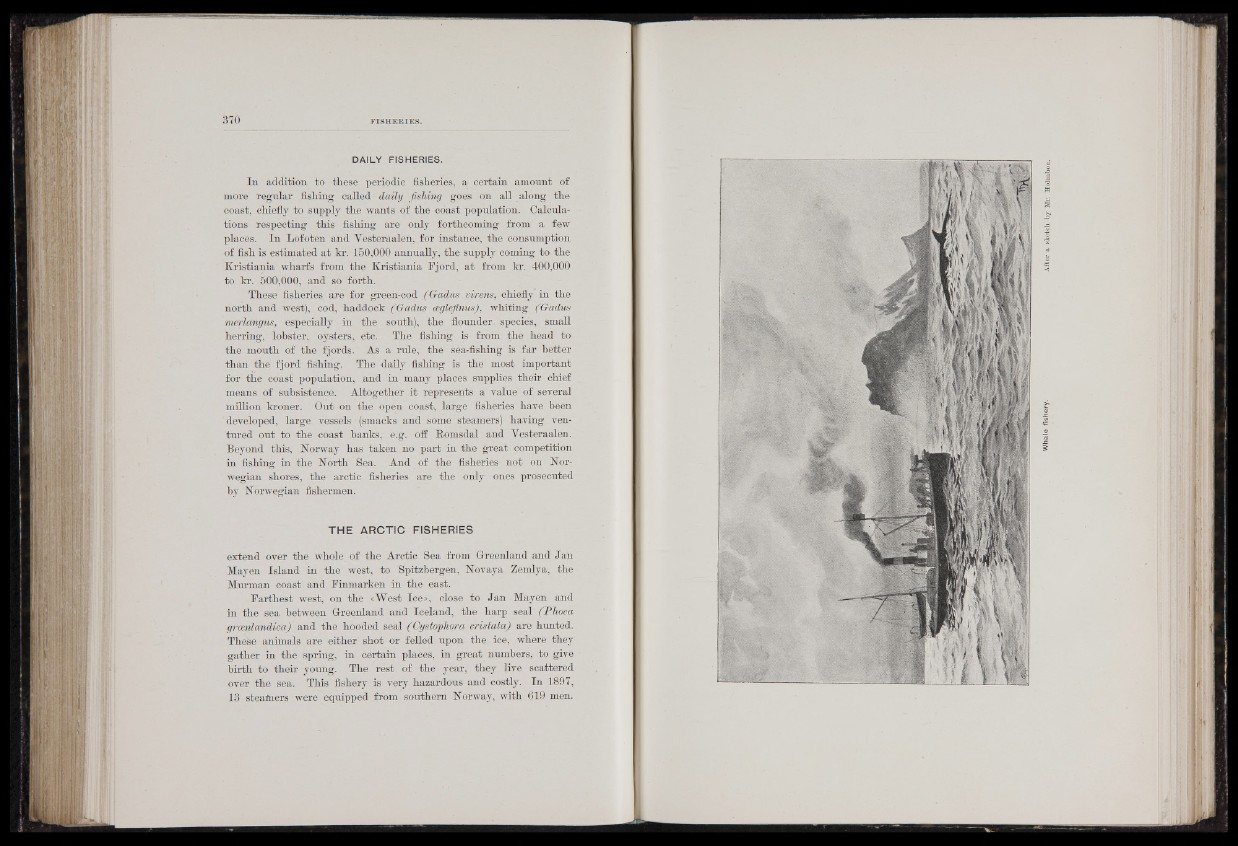
DAILY FISHERIES.
In addition to these periodic fisheries, a certain amount of
more regular fishing called daily fishing goes on all along the
coast, chiefly to supply the wants of the coast population. Calculations
respecting this fishing are only forthcoming from a few
places. In Lofoten and Vesteraalen, for instance, the consumption
of fish is estimated at kr. 150,000 annually, the supply coming to the
Kristiania wharfs from the Kristiania Fjord, at from kr. 400,000
to kr. 500,000, and so forth.
These fisheries are for green-cod ( Gadus virens, chiefly in the
north and. west), cod, haddock ( Gadus ceglefinus), whiting (Gadus
merlangns, especially in the south), the flounder, species, small
herring, lobster, oysters, etc. The fishing is from the head to
the mouth of the fjords. As a rule, the sea-fishing is far better
than the fjord fishing. The daily fishing is the most important
for the coast population, and in many places supplies their chief
means of subsistence. Altogether it represents a value of several
million kroner. Out on the open coast, large fisheries havitbeen
developed, large vessels (smacks and some steamers) having ventured
out to the coast banks, e.g. off Romsdal and Vesteraalen.
Beyond this, Norway has taken no part in the great competition
in fishing in the North Sea. And of the fisheries not on Norwegian
shores, the arctic fisheries are the only ones prosecuted
by Norwegian fishermen.
THE ARCTIC FISHERIES
extend over the whole of the Arctic Sea from Greenland and Jan
Mayen Island in the west, to Spitzbergen, Novaya Zemlya, the
Murman coast and Finmarken in the east.
Farthest west, on the «West Ice», close to Jan Mayen and
in the sea between Greenland and Iceland, the harp seal (Phoea
grainlandiea) and the hooded seal (Cystophora cristata) are hunted.
These animals are either shot or felled upon the ice, where they
gather in the spring, in certain places, in great numbers, to give
birth to their young. The rest of the year, they live scattered
over the sea. This fishery is very hazardous and costly. In 1897,
13 steamers were equipped from southern Norway, with 619 men.